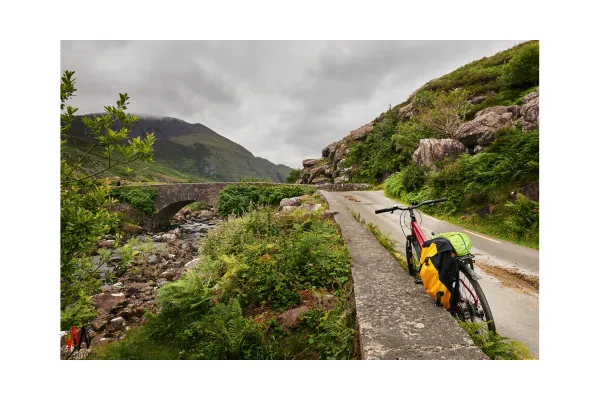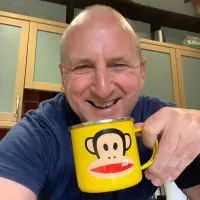Are you ready to think beyond the usual?
Read some of my Blog posts

Imagine the possibilities of a more efficient work life. It's within your reach.
“The harder you work and the more prepared you are for something, you're not going to fear it as much.” - Sir Andy Murray
Mastering Productivity: Getting the Right things in the Right Place at the Right Time.
Ever feel like you're spinning your wheels but not getting anywhere? Productivity isn’t just about doing more—it’s about doing the right things in the right place at the right time. This post dives into practical strategies to help you master this art and supercharge your efficiency, specially tailored for business leaders and professionals. By mastering productivity, you cannot only get more done but also achieve better results, reduce stress, and improve your work-life balance. Imagine the possibilities of a more efficient and balanced work life. It's within your reach.

Why Timing and Location Matter
Before we get into the nitty-gritty, let’s discuss why timing and location are crucial. Have you ever tried to work on a complex project late at night, only to find your brain foggy? Or perhaps you’ve attempted to concentrate in a noisy cafe? It’s not just you. Our brains work better at certain times and in specific environments. Understanding this can be a game-changer for your productivity.
1. Know Your Peak Performance Times
Everyone has a unique internal clock. Some people are morning larks, while others are night owls. Figuring out when you’re most alert and focused can make a big difference. Here’s how to determine your peak times, tailored to your individual needs and preferences. We understand that your productivity needs are unique, and these strategies are designed to cater to that.
Track Your Energy Levels: Note your energy levels throughout the day for a week. When do you feel most awake? When do you hit a slump?
- Identify Patterns: Look for patterns in your energy levels. You might find you’re most productive in the mornings or late afternoons.
- Test and Adjust: Experiment with scheduling essential tasks during your identified peak times and see how it affects your productivity.
2. Optimise Your Environment
Where you work is just as important as when you work. Here are some tips to create an optimal work environment. A well-optimised work environment can help you stay focused, reduce distractions, and enhance your comfort, which can contribute to improved productivity and efficiency.
- Minimize Distractions: Choose a quiet place or use noise-cancelling headphones in a noisy area.
- Comfort is Key: Ensure your workspace is comfortable. An ergonomic chair, proper lighting, and a clutter-free desk can make a difference.
- Personalize Your Space: Add personal touches like plants, photos, or anything that makes you feel more at ease and motivated.
3. Prioritise Your Tasks
Not all tasks are created equal. Prioritising what needs to be done can help you focus on what truly matters.
- Use the Eisenhower Matrix: This tool helps you categorise tasks into four quadrants: urgent and important, important but not urgent, urgent but not important, and neither urgent nor important.
Set Daily Goals: Write down three goals you want to achieve each day. This will help you stay focused on what’s important.
- Break It Down: Break larger tasks into smaller, manageable steps. This makes them more manageable and more straightforward to tackle.
4. Leverage Technology
There are countless tools available to help you stay on track. Here are a few worth exploring. Don't worry; these tools are user-friendly and easily integrated into your workflow. They're designed to make your life easier and your work more efficient.
Task Management Apps: Apps like Trello, Asana, or Todoist can help you organise and prioritise your tasks. For example, Trello, a popular project management tool, allows you to create boards for different projects, add tasks to each board, and move them around as they progress, giving you a visual overview of your tasks and their status. I have used Trello for several years and found it to be a game-changer in my productivity journey.
- Time-Tracking Tools: Use tools like Toggl or Clockify to monitor how you spend your time. This can highlight where you’re losing productivity.
- Focus Aids: Apps like Focus@Will or the Pomodoro Technique can help you stay focused by breaking your work into manageable chunks.
5. The Power of a Focused 90-Minute Session
One strategy that has significantly boosted my productivity is dedicating 90 minutes every workday to focus solely on growing my business. Here's how it works:
- Dedicated Time: Every morning, I spend ninety minutes on projects that will improve my business. This means no client work or admin jobs—just quality time for growth.
- Ideal Environment: I sit upstairs in my attic office, free from distractions. My phone is off, I don't check my emails, and a sign at the bottom of the stairs says, "Do not disturb unless the house is on fire."
- Support System: My wife, Mandy, and our dog, Betty, know not to disturb me during this crucial time. This allows me to get deep work done without interruptions. Deep work refers to a state of flow where you're fully immersed in a task, free from distractions, and able to produce high-quality work. This is often when the most significant progress is made on projects.
- Daily Routine: By nine AM, I come downstairs, have a cup of tea, and start my day knowing I've accomplished something significant. This sets a positive tone for tackling the nitty-gritty of the day's work.
6. Learn to Say No
One of the biggest productivity killers is overcommitting. Knowing your limits and not being afraid to say no is essential. By learning to say no, you can protect your time and energy, focus on your priorities, and avoid burnout.
Evaluate Requests: Consider how it fits your current priorities and schedule Before agreeing to take on a new task or project.
- Set Boundaries: Clearly communicate your availability and limits to others.
- Delegate: If possible, delegate tasks to others. This frees up your time to focus on what’s most important.
FAQs
Q: How do I handle interruptions at work?
A: Set clear boundaries about your work hours with colleagues or family members. Use tools like ‘Do Not Disturb’ settings on your devices and designate specific times for checking emails and messages.
Q: What if my peak productivity times don’t align with my work schedule?
A: Try to negotiate flexible hours with your employer. If that’s not possible, optimise the times you do have control over, such as early mornings or late evenings.
Q: Can multitasking help me get more done?
A: Generally, no. Multitasking can reduce productivity. Focus on one task at a time for better efficiency and quality of work.
Wrapping Up
Mastering productivity isn’t about doing more; it’s about doing the right things at the right times and in the right places. By understanding your peak performance times, optimising your environment, prioritising tasks, leveraging technology, and incorporating focused sessions like the 90-minute daily routine, you can enhance your productivity and achieve your goals more efficiently. These practical and adaptable strategies can be implemented easily in your daily routine, giving you confidence and hope for a more productive future.
So, start implementing these strategies today and watch your productivity soar! I'd love to hear how these strategies work for you. Share your experiences or ask any questions in the comments below.

Even Betty knows this is the best place for her, when I am doing my 90-minutes

Magnitud.Biz
Patrick Tarpey
91 Clark Road
Wolverhampton
WV3 9PA
Copyright Magnitude 2023-24


